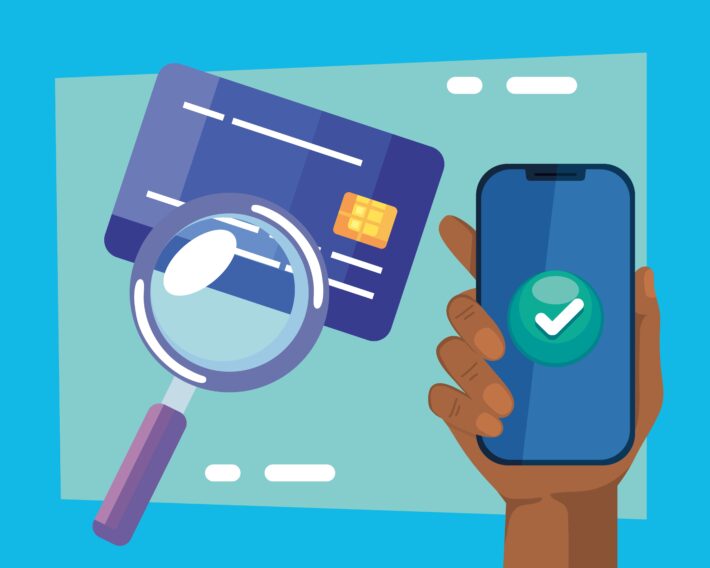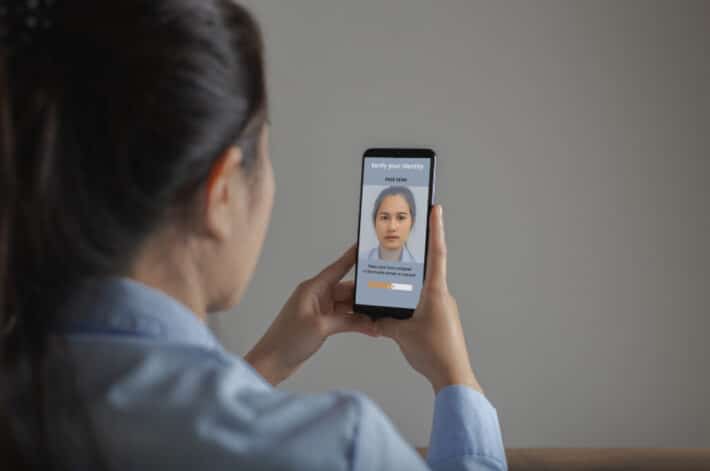Securing Healthcare Access Innovations In Identity Verification

In the contemporary digital era, the importance of securing healthcare access has become increasingly pronounced. Identity verification assumes a pivotal role in safeguarding the confidentiality and security of patients’ information. This article aims to delve into the imperative nature of identity verification in the healthcare sector, healthcare access innovation in ID verification, the repercussions associated with insufficient verification procedures, and the conventional methods presently employed. Furthermore, it will scrutinize the constraints of these conventional approaches and spotlight the advancements that are reshaping identity verification within the healthcare domain.
Ranging from digital solutions to the utilization of blockchain technology, these advancements present heightened security measures, enriched user experiences, and potential cost efficiencies. However, challenges such as data privacy and procedural implementation persist. We invite readers to accompany us as we navigate through the intricacies of identity verification within the realm of healthcare accessibility.
The Importance of Securing Healthcare Access
Ensuring healthcare access is of paramount importance, as it plays a critical role in safeguarding patient information, verifying patient identities accurately, and upholding the integrity of healthcare services. Given the growing dependence on electronic medical records and digital platforms, it is imperative to implement robust identity verification and security protocols to protect health data and mitigate unauthorized access.
Why is Identity Verification Necessary in Healthcare?
Identity verification holds critical importance in the healthcare sector to ensure proper patient care and safeguard personal information from unauthorized access.
One of the primary rationales for emphasizing identity verification in healthcare is to combat medical identity theft effectively. By verifying patients’ identities through robust authentication methods, healthcare providers can substantially mitigate the risks associated with fraudulent activities that could jeopardize patient safety and financial security.
Accurate patient identification is pivotal in guaranteeing that individuals receive precise treatment and medications tailored to their specific medical requirements. Various authentication techniques, including biometrics, smart cards, and two-factor authentication, are commonly utilized in healthcare environments to facilitate this process. However, challenges such as initial implementation costs, interoperability concerns, and user acceptance must be addressed to ensure the successful integration of these authentication methods.
What are the Consequences of Inadequate Identity Verification?
Insufficient identity verification within the healthcare sector can have significant ramifications, including instances of medical identity theft, unauthorized access to healthcare services, and jeopardized patient safety.
Improper identity verification poses substantial risks, such as patients receiving incorrect treatments due to mistaken identities, unauthorized individuals obtaining access to sensitive medical records, and the perpetration of insurance fraud schemes under false identities. Recent studies indicate that medical identity theft has resulted in substantial financial losses amounting to billions of dollars annually within the healthcare industry. Data breaches stemming from inadequate identity verification practices constitute a significant contributing factor to this issue. In the year 2020 alone, the healthcare sector witnessed over 600 reported data breaches, exposing the personal and medical information of millions of patients to potential misuse.
The Traditional Methods of Identity Verification in Healthcare
Conventional practices of identity verification within the healthcare sector have been established and utilized for an extensive period. These practices encompass paper-based procedures, knowledge-based authentication, and biometric identification. Each method presents distinct advantages and constraints in the realm of guaranteeing secure access to healthcare services.
1. Paper-based Methods
The traditional paper-based methods of identity verification in healthcare entail the utilization of physical documents like identification cards and medical records for the purpose of confirming patient identity.
Despite their conventional nature, these paper-based methods continue to hold a significant role in patient identity verification owing to their prevalent usage and straightforward implementation. However, these methods are not devoid of challenges.
One of the primary vulnerabilities associated with paper-based records pertains to the potential risk of document forgery, which could result in severe consequences should a patient’s identity be compromised.
The physical form of paper documents renders them susceptible to loss or damage, thereby raising concerns regarding data integrity and confidentiality.
In an effort to address these risks, healthcare providers frequently implement security protocols such as restricted access to paper files, routine audits, and encryption techniques to safeguard patient information.
2. Knowledge-based Authentication
Knowledge-based authentication in healthcare is the process of verifying a patient’s identity by prompting them to respond to personal questions that are based on their knowledge and information. This method is commonly utilized during account creation or when accessing confidential medical records to prevent unauthorized individuals from gaining entry. The questions posed may cover a range of personal details, such as date of birth, previous addresses, or the name of a favorite childhood pet. By mandating individuals to authenticate their identity through these inquiries, healthcare providers can introduce an additional security measure to protect sensitive patient data.
One limitation of knowledge-based authentication is its heavy reliance on accurate personal information, which could potentially be acquired or guessed by cybercriminals. This vulnerability increases the risk of identity theft and the potential compromise of patient data.
3. Biometric Identification
Biometric identification in healthcare utilizes distinctive physical attributes such as fingerprints, facial recognition, and iris scans to authenticate a patient’s identity.
These biometric technologies offer a robust solution to ensure precise patient identification, thereby mitigating the potential risks of medical errors stemming from mistaken identity. By harnessing biometric markers that are unique to each individual, healthcare institutions can bolster their security protocols, thereby safeguarding sensitive patient data and thwarting unauthorized access to information.
The procedural aspect involves the secure capture and storage of these biometric data points in a digital format, enabling their swift and dependable utilization for identification purposes at various touchpoints within the healthcare network. The incorporation of biometric identification methodologies also gives rise to concerns regarding privacy and data security.
The Limitations of Traditional Methods
Despite their widespread use, traditional methods of identity verification in healthcare have been found to have several limitations. These include vulnerabilities to fraud, inefficiencies, and the potential for human error. Instances of identity theft within healthcare settings are alarmingly prevalent, driven by criminals who exploit loopholes in outdated verification procedures to gain unauthorized access to sensitive patient information for illicit financial gain.
The manual nature of many traditional verification methods, such as paper-based forms and manual checks, not only poses a risk for errors but also contributes to significant administrative burdens for healthcare providers. These inefficiencies not only slow down processes but also have the potential to compromise patient safety and the quality of care delivered.
It is evident that a more secure and streamlined approach to identity verification is essential in effectively addressing these challenges faced within the healthcare sector.
Innovations in Identity Verification for Healthcare Access
Advancements in identity verification for healthcare access have yielded notable progress in guaranteeing secure, efficient, and dependable patient identification. These advancements encompass digital identity verification, blockchain technology, artificial intelligence, and mobile technology, each presenting distinct advantages and functionalities that contribute to the improvement of healthcare security.
1. Digital Identity Verification
The utilization of advanced digital solutions in healthcare for digital identity verification aims to authenticate patients and ensure secure access to healthcare services.
The integration of digital identity verification technologies within healthcare facilities enables healthcare providers to verify that authorized individuals are accessing medical records, prescriptions, and treatment plans. Among these technologies, biometric authentication stands out, utilizing unique physical characteristics such as fingerprints or facial recognition to accurately verify patient identities. This approach not only enhances security measures but also optimizes the check-in process at hospitals and clinics, leading to reduced wait times and increased overall operational efficiency.
Moreover, the exploration of blockchain technology for securely storing and sharing patient data while upholding anonymity and data integrity is ongoing. These digital solutions present an opportunity to create a more seamless and secure healthcare environment for both patients and healthcare providers.
2. Blockchain Technology
Blockchain technology presents a decentralized and secure method for identity verification within the healthcare sector, ensuring the integrity and safeguarding of patient data. Through the utilization of blockchain, healthcare providers can establish an immutable ledger of patient information that is both encrypted and distributed across a network of computers. This system eliminates the necessity for a central authority to supervise data transactions, thereby enhancing security measures by mitigating the risk of data breaches and unauthorized access. Furthermore, this approach guarantees that patient records remain transparent and easily traceable.
The inherent immutability of blockchain technology aids in the prevention of fraud and identity theft, as any modifications made to the records are recorded and accessible to all relevant parties. Despite these evident advantages, challenges such as interoperability, scalability, and regulatory compliance must be effectively managed to facilitate the widespread acceptance of blockchain technology in healthcare identity verification. Looking towards the future, the outlook for blockchain technology in healthcare identity verification appears promising, with the potential to fundamentally transform the management, sharing, and protection of patient data.
3. Artificial Intelligence
Artificial intelligence (AI) is transforming identity verification in the healthcare industry through the utilization of advanced algorithms that are adept at detecting fraudulent activities and bolstering security measures.
The intricate algorithms powered by AI are pivotal in scrutinizing extensive datasets to identify patterns that may signify fraudulent behaviors. This capability significantly enhances the precision and efficiency of patient identification processes.
For example, the incorporation of AI-driven facial recognition technology within healthcare settings allows providers to authenticate patients’ identities during hospital visits or virtual consultations. This not only mitigates the risks associated with identity theft and medical fraud but also reinforces security measures within the healthcare domain.
Moreover, AI-based tools like optical character recognition (OCR) systems enable healthcare institutions to streamline document authentication processes and curb unauthorized access to confidential patient data. Consequently, the adoption of such technologies serves to fortify the overall security infrastructure in the healthcare sector.
4. Mobile Technology
The integration of mobile technology has emerged as a potent tool for identity verification within the healthcare sector, facilitating secure remote access and real-time authentication.
These mobile solutions present a plethora of advantages, providing unparalleled convenience for healthcare providers and patients alike. By enabling instantaneous access to patient records and identity verification, healthcare professionals can administer efficient and tailored care.
The utilization of mobile applications guarantees augmented security protocols, fortifying the protection of sensitive patient data against possible breaches. Noteworthy security features, such as fingerprint scanning and facial recognition technology, are extensively employed for patient identification and secure access across diverse healthcare environments, furnishing a seamless and dependable verification process.
The Benefits of these Innovations
The advantages of the advancements in identity verification for the healthcare sector are vast, including:
- Heightened security measures
- Improved user experience
- Substantial cost reductions for healthcare providers
1. Improved Security
Cutting-edge identity verification methods contribute to enhanced security in healthcare systems through the provision of robust data protection and sophisticated cybersecurity protocols.
These emerging identity verification technologies play a pivotal role in safeguarding confidential patient data and mitigating the risks associated with unauthorized access. For example, data encryption guarantees that all healthcare information is securely encoded to prevent unauthorized parties from accessing or altering it. Moreover, multi-factor authentication introduces an additional layer of security by necessitating users to provide multiple forms of verification before gaining access to patient records or other sensitive data. The deployment of secure communication channels further reinforces security measures by ensuring that all data exchanges between healthcare professionals and patients are encrypted and shielded from potential breaches.
2. Enhanced User Experience
The utilization of innovative identity verification methods in healthcare can bring about a host of benefits, with improved user experience standing out as a significant advantage. These advanced verification technologies streamline and expedite the user verification processes for both patients and healthcare providers.
The integration of such cutting-edge identity verification tools not only bolsters security measures but also incorporates user-friendly attributes such as simplicity and rapid authentication. Healthcare systems have effectively incorporated biometric authentication methods like fingerprint scanning and facial recognition, facilitating patients to swiftly and securely verify their identities. This seamless amalgamation not only enhances the efficiency of patient check-ins but also boosts overall satisfaction levels by diminishing wait times and fortifying data security.
3. Cost Savings
Incorporating innovative identity verification methods within the healthcare sector has the potential to yield substantial cost savings through enhanced operational efficiency and decreased susceptibility to fraudulent activities.
A prominent hospital network optimized its patient verification procedures by integrating biometric identification technology, illustrating this example. This implementation not only bolstered accuracy and mitigated the occurrence of duplicate records but also generated efficiencies by reducing the need for manual data entry by staff members.
Furthermore, another healthcare institution adopted automated identity verification systems, leading to expedited patient check-ins and diminished wait times, thereby elevating the overall quality of the patient experience and augmenting patient throughput. These advancements not only curtailed administrative expenditures but also diminished the likelihood of fraudulent behavior within the organization.
Challenges and Concerns with these Innovations
Although there are numerous advantages, challenges, and considerations arise in relation to the implementation and integration of innovative identity verification methods in the healthcare sector, particularly concerning data privacy and security.
1. Data Privacy and Security
Data privacy and security are of utmost importance in the implementation of cutting-edge identity verification methods within the healthcare sector. This is particularly critical as these methods entail the handling of sensitive patient data and the necessity to comply with regulatory mandates.
Healthcare providers bear the responsibility of safeguarding patient information to uphold confidentiality and adhere to stipulations such as the Health Insurance Portability and Accountability Act (HIPAA). In the contemporary digital era, the prevalence of data breaches has heightened, posing potential risks to patient privacy and the establishment of trust.
To counteract these risks, healthcare institutions must implement stringent data encryption protocols, conduct routine security evaluations, and deliver comprehensive staff training on optimal data security practices. By proactively embracing measures to protect data, healthcare providers can preserve patient confidence and ensure the preservation of the integrity of their confidential data.
2. Implementation and Adoption
The incorporation and integration of advanced identity verification methods within the healthcare sector can present significant challenges that necessitate meticulous planning, secure infrastructure, and stakeholder endorsement.
One of the primary obstacles in the deployment of novel identity verification technologies in healthcare pertains to the harmonization of these systems with existing infrastructure. The task of ensuring smooth interoperability among diverse software applications and databases is intricate and time-intensive.
It is imperative to provide comprehensive training to healthcare personnel on the effective utilization of these new technologies to ensure their successful assimilation. The management of change represents another pivotal aspect, as resistance to change from employees and stakeholders has the potential to impede the adoption of innovative solutions.
To surmount these challenges, healthcare institutions can devise a comprehensive implementation strategy, allocate resources towards robust training initiatives, and actively engage key stakeholders in the decision-making process to secure their endorsement and cooperation.
Frequently Asked Questions
What is identity verification in healthcare?
Identity verification in healthcare is the process of confirming the identity of a patient or healthcare provider in order to ensure secure access to healthcare services and information. This can involve verifying personal information, such as name and date of birth, as well as using biometric identification methods, such as fingerprints or facial recognition.
Why is it important to secure healthcare access?
Securing healthcare access is crucial for protecting the privacy and confidentiality of patients’ personal and medical information. It also helps prevent fraud and identity theft, ensures accurate medical records, and promotes trust between patients and healthcare providers.
What are some innovative methods for identity verification in healthcare?
Some innovative methods for identity verification in healthcare include biometric identification, such as fingerprints or facial recognition, two-factor authentication, and blockchain technology. These methods offer increased security and efficiency compared to traditional methods, such as paper-based ID cards.
Can identity verification in healthcare be done remotely?
Yes, with the advancements in technology, identity verification in healthcare can now be done remotely. This is especially helpful for telemedicine appointments, as patients can verify their identity from the comfort of their own home using biometric identification or other secure methods.
What are the potential risks of inadequate identity verification in healthcare?
Improperly implementing identity verification in healthcare can lead to data breaches, medical identity theft, and inaccurate medical records. This can not only compromise patient privacy and safety but also result in financial losses for both patients and healthcare providers.
How can healthcare organizations ensure proper identity verification?
Healthcare organizations can ensure proper identity verification by implementing robust authentication processes, regularly updating security protocols, and training staff on best practices for identity verification. They can also partner with reputable identity verification companies that specialize in healthcare to ensure the highest level of security.



